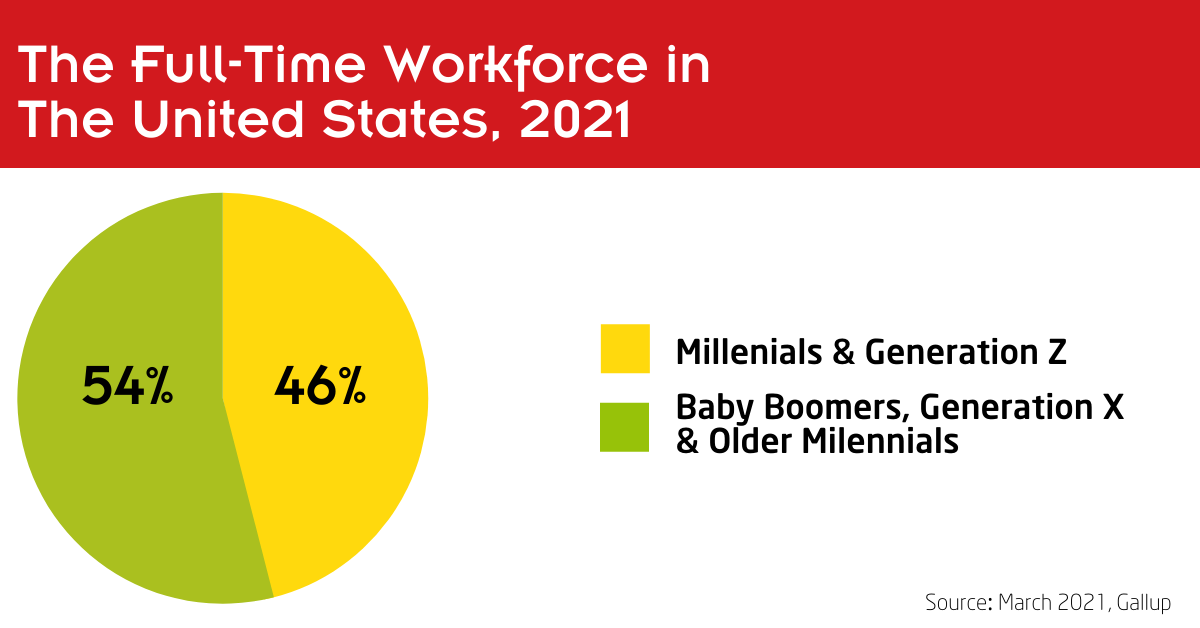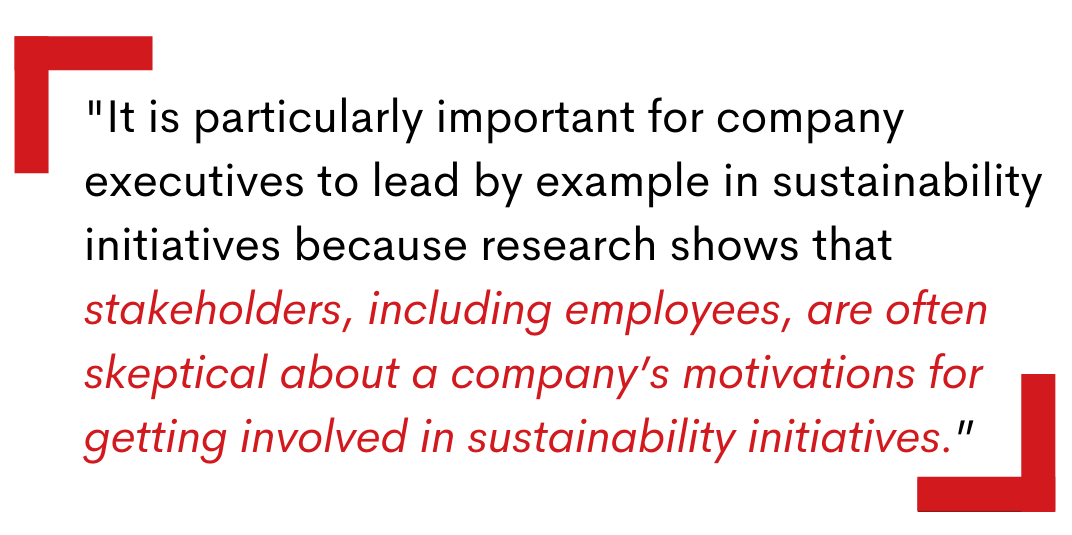5 minute read
Takeaway: More companies are turning to sustainable practices and looking towards the future – and it’s paying off. Those that don’t may see a decline in profits, prospective employees and investors. Building sustainability into your operating model requires commitment, but it is a crucial step towards remaining agile and competitive in your marketplace.
Sustainability, Defined
Sustainability is a buzzword that gets thrown around quite a bit – but what does it really mean?
Sustainability is defined as “the ability to be maintained at a certain rate or level” without depleting all usable resources. The International Institute for Sustainable Development adapts this definition to be more business focused: “sustainable development is development that meets the needs of the present without compromising the ability of future generations to meet their own needs.” In essence, a sustainable business model allows your business to thrive in the long-term.
Consumer trends show buyers are gravitating towards more sustainable consumption, travel, and lifestyles. In a 2020 IBM survey, nearly six in 10 consumers report they are willing to change their shopping habits to reduce environmental impact, while nearly eight in 10 respondents indicate sustainability is important for them. It’s not just B2C organizations that will be impacted by growing trends towards sustainability. The B2B world could see less interest from prospective employees, business partners, and investors unless they build meaningful sustainability into their model. Gen Z and millennials currently make up nearly 50% of the U.S. full-time workforce. According to a March 2021 study by Gallup, this demographic prioritizes environmental, social, and corporate governance, also known as ESG, in their potential employers.

The Future of Business Operating Models
Now, what does this mean for business operating models?
A sustainable operating model creates value for everyone involved without depleting the resources that help keep it running. This is where your triple bottom line comes in – triple bottom line is an economic framework that directs companies to emphasize the real social and environmental impacts as much as other obvious costs and profits. Managing those environmental, social, and financial costs, risks, impacts, and opportunities are key to competing in the market.
A sustainable operating model will not only keep your business relevant to shareholders, stakeholders and consumers looking to support sustainable businesses, but it ensures your business can do good and make a profit — flourishing far into the future. Businesses with the most successful operating models are those that incorporate the triple bottom line, representing a holistic and well-rounded approach.
.png)
At OTM, we believe that every sustainable operating model should be Fit for Purpose, with all work, decisions, and behaviors aligned to deliver the best competitive advantage in the marketplace: to deliver its true north. However, many companies are plainly missing the mark when it comes to their sustainable operating models.
The 4 Integral Elements for a Sustainable Operating Model
Here are the elements that are often overlooked, but integral for building a sustainable operating model.
-3.png) Many organizations make the mistake of fixating on compliance and reporting to define their sustainability achievements and goals, overusing defined metrics to validate their ESG work. Instead, organizations should incorporate sustainable strategy, measuring action and progress towards those strategic goals. Here at OTM we use the phrase “compliance vs. commitment”. Meaning, do you leave these decisions to a selective group like your senior leaders to enforce change OR do you involve everyone in the process to co-create it which builds belief and emotional commitment?
Many organizations make the mistake of fixating on compliance and reporting to define their sustainability achievements and goals, overusing defined metrics to validate their ESG work. Instead, organizations should incorporate sustainable strategy, measuring action and progress towards those strategic goals. Here at OTM we use the phrase “compliance vs. commitment”. Meaning, do you leave these decisions to a selective group like your senior leaders to enforce change OR do you involve everyone in the process to co-create it which builds belief and emotional commitment?
OTM works to formulate your competitive difference during the Business Direction phase of our applied methodology. This portion of work is the most important element because this is when your strategic goals are defined.
-2.png)
Each of your colleagues, from front-line workers to c-suite employees, should actively work towards building and improving your sustainable operating model. This means building it in, teaching, and incentivizing bottom-up ideas for improvement.
The fashion industry is the second largest polluter in the world, second only to the oil industry. The environmental damage caused by the industry is massive – accounting for at least 10% of global emissions. However, there are alternatives to mitigate these problems. For instance, Christy Dawn, a US-based fashion brand, has incorporated sustainable practices into every level of its business. They utilize fabrics left behind in warehouses that would normally be thrown away, deliver items in sustainable packaging, and have a strong voice in the activist world regarding minimalism.
The work stream, the areas of activity and tasks completed by different groups within your company, is defined during the Value Stream phase of our applied methodology. Employee engagement is integral here.
-1.png)
Without tiered accountability, your organization will not be able to communicate properly or execute sustainable work in a timely or meaningful way. Many companies make the mistake of simply hiring a sustainability officer. This is generally done with good intentions or for good press, but research shows this is not an effective way to transform your business alone. One person cannot do the work for the organization, it must be integrated.
During the Management Mechanisms phase of work, OTM dives into integrating and coordinating mechanisms. These tools are essential to “glue” work, people and decisions together.
.png)
Sincere, driven leadership is a key component in creating a thriving, sustainable operating model. According to the Stanford Social Innovation Review, actions speak louder than words.

In other words, to be successful, leadership needs to walk the walk. Patagonia is a great example of cultural sustainability at work, the founder regularly speaks publicly on the topic, has pledged 1% of profits annually to environmental causes, and created a second-hand Patagonia shop to up-cycle items that would normally go to landfills. Patagonia employees are also encouraged and rewarded for contributing innovative environmental ideas.
Organizational Renewal occurs when all pieces of OTM’s applied STAR model are now in alignment. This renewed alignment signals that the work towards integrated leadership and cultural success is underway.
Conclusions
There are a huge number of businesses that promote themselves as “environmentally friendly” or that speak of fluid, long-term goals that generally end up slipping through the cracks. The truth is, you can put up a poster in your board room touting your “sustainable business”, or you can practice what you preach and build it into the soul of your organization. Laws and regulations will only continue to surface, impacting business operations. In order to remain compliant and implement lasting, meaningful change, Organization Design work is where you should begin.
What will your business look like in five years if you build sustainability into your operating model?
Erin Chase is a Support Consultant at ON THE MARK.
OTM is the leading global boutique organization design consultancy with offices in the USA and UK. With over 450 successful redesigns and operating model modernizations completed, OTM is the owner of the industry’s most integrated, comprehensive, and holistic organization design solution. OTM enables its clients to realize their future ambitions.


